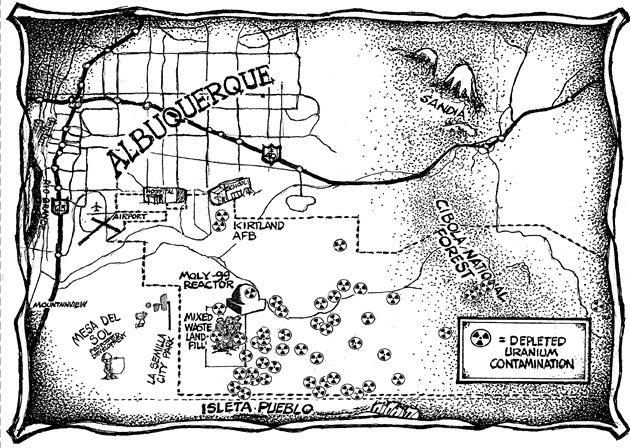
Radiation and Public Health Project, Inc.
The Radiation and Public Health Project, Inc. is one of 39 environmental and peace organizations that won a landmark lawsuit against the U.S Department of Energy for failure to follow-through on adequate environmental cleanup during its 50+ years of nuclear weapons research, testing, and production. Part of this settlement was the establishment of the MTA Fund (Citizens’ Monitoring and Technical Assessment Fund), which provided $6.25 million for tribes and non-profit organizations to assess and conduct independent technical and scientific studies regarding the multitude of technical, ecological, and health issues surrounding the nation’s nuclear weapons complex.
Clark University was chosen by the non-profit peace and environmental groups as the conservator of these reports to ensure they remain available to the public in perpetuity. The unconventional election of university as conservator is an innovative example, particularly within the era of Web 1.0, of higher education as protector and provider of information through wide dissemination.
The research and reports available in this series were conducted by the Radiation and Public Health Project, Inc. with their allocated portion of the MTA fund.
If you have any questions or concerns please contact us at digitalrepository@clarku.edu.
-

Examining The Relationship Between Radioactivity In Baby Teeth And Cancer Incidence And Mortality Near The Brookhaven National Laboratory
Radiation and Public Health Project, Inc. and Joseph J. Mangano
The Radiation and Public Health Project (RPHP), a non-profit research and education group consisting of health professionals and scientists, has proposed to analyze information enabling it to: 1) compare trends of radiation in baby teeth with trends in cancer in eastern Long Island, near the Brookhaven National Laboratories (BNL) 2) evaluate if Long Island children with certain diseases such as cancer have elevated levels of radiation in their baby teeth.
The analysis is of great importance to understanding radiation’s health risks to humans. RPHPs unique data base of Strontium-90 measurements in hundreds of BNL-area baby teeth enables it to compare patterns of radiation exposure with patterns of disease. Sr-90 is a carcinogenic chemical produced only in nuclear weapons and reactors.
Data on Sr-90 in teeth were previously obtained through laboratory analysis (partially funded under Round 5 of the Resolve program). For this Round 6 effort, cancer incidence and mortality data were obtained from the New York State Department of Health and U.S. Centers for Disease Control and Prevention, respectively. Health status information for Long Island children who donated baby teeth were obtained through a mail survey administered by RPHP during Round 6.
This research was completed money allocated during Round 6 of the Citizens’ Monitoring and Technical Assessment Fund (MTA Fund). Clark University was named conservator of these works.
If you have any questions or concerns please contact us at digitalrepository@clarku.edu
-

Final Report: Program to Investigate Patterns of Environmental vs. In-Body Radioactivity Near the Brookhaven National Laboratory
Radiation and Public Health Project, Inc. and Joseph J. Mangano
The Radiation and Public Health Project (RPHP), a non profit research and education group, has collected and analyzed data on environmental and in-body radioactivity levels near the Brookhaven National Laboratories (BNL).
The work is important since BNL operated three nuclear reactors at the site in Suffolk County NY from 1950-1999. These reactors released considerable radioactivity into the air and water, contaminating the local environment. The other basis for the effort are certain patterns of health status in the local area, specifically:
- From 1979-2001, the Suffolk County cancer death rate (whites) was 12.6% above the national rate, but only 0.1% higher for all other causes of death. This means that 7410 Suffolk cancer deaths are in excess of the U.S.
- During the same period, Suffolk County breast cancer death rate (whites) was 24.2% above the U.S., and was elevated for young, middle-age, and elderly women.
- From 1997-2001, 366 Suffolk County children under age 20 were diagnosed with cancer, a rate 15.5% above the national standard. Children are most susceptible to the damaging effects of radiation exposure.
- The 1997-2001 Suffolk County incidence rate of thyroid cancer, a condition highly sensitive to radiation exposure, was 30% above the New York State rate, and had tripled in the past 20 years.
- The area of Suffolk County with the highest incidence of breast, prostate, lung, and colorectal cancer is east (downwind) of BNL.
RPHP drew information on local levels of radioactivity from two sources. It used the extensive (but little analyzed) state and federal data on concentrations in the air, water, precipitation, and fish. It also collected and analyzed data on Strontium-90 concentrations in over 500 baby teeth donated by Suffolk County residents. Strontium- 90 is a calcium-like substance only created in atomic weapons explosions and nuclear reactor operations. It is radioactive and carcinogenic.
This research was completed money allocated during Round 5 of the Citizens’ Monitoring and Technical Assessment Fund (MTA Fund). Clark University was named conservator of these works.
If you have any questions or concerns please contact us at digitalrepository@clarku.edu


